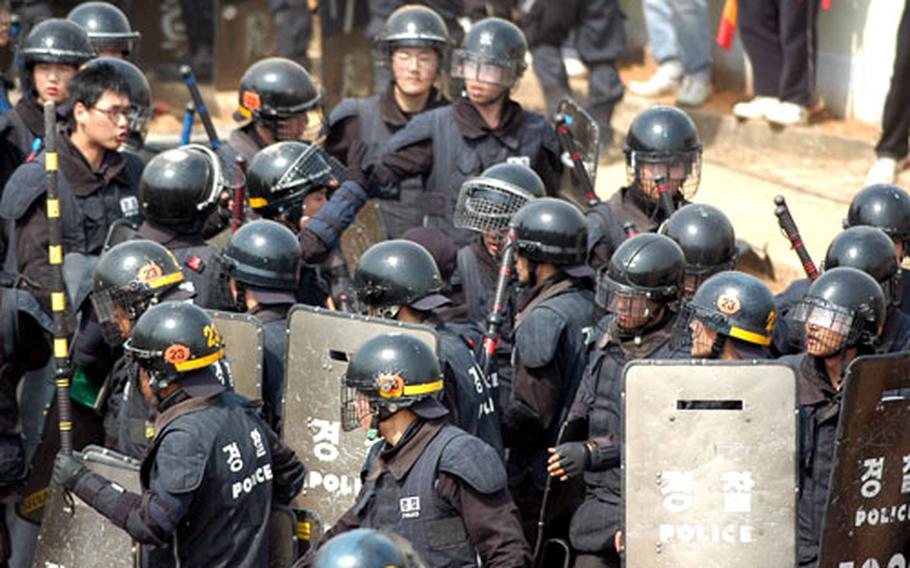
In Daechu-ri village just outside Camp Humphreys, South Korea, on May 4, 2006, riot-equipped Korean National Police officers prepare for a fresh clash with anti-U.S. protesters. (F. Neil Neeley / Courtesy of U.S. Army)
PYEONGTAEK, South Korea — Korean National Police officers have come to play an integral role in helping the U.S. Army maintain security at and near Camp Humphreys, according to the installation’s commander.
A KNP contingent has been on the post round-the-clock for “at least 10 months,” said Army Col. Michael J. Taliento Jr., Area III Support Activity commander.
The KNP also continue to be stationed in their in their more familiar role outside the perimeter.
That increased involvement with the installation has grown largely out of violent, large-scale protest rallies during the past two years by anti-U.S. activists opposing the planned expansion of Camp Humphreys, Taliento said.
The post is scheduled to triple in size and become home to the bulk of U.S. forces in South Korea under a South Korea-U.S. agreement.
The KNP report daily on a schedule of assigned shifts.
Korean National Police are on the installation “24 hours a day and the numbers will change depending on the potential or the probability of a demonstration or a civil gathering,” Taliento said.
The KNP’s main job inside the installation is to respond to situations involving South Korean citizens, especially protesters who may pose a threat to the installation or its population, he said.
“Our overall goal is to not have U.S. personnel involved directly with the demonstrators,” Taliento said.
The KNP’s tasks aren’t limited to engaging with demonstrators.
In addition, he said, KNP “would assist in any other emergency.”
For example, he said, they helped evacuate injured Korean National Police and “also have assisted in coordinating a response to fire, where we’ve had fires lit outside the installation and the fire has come on post.”
And during demonstrations or other urgent situations, KNP officers perform a liaison role inside the post’s operations center, Taliento said.
Humphreys’ expansion is to enable the eventual shift of U.S. forces from Seoul and points north in Area I to the Pyeongtaek region, with Camp Humphreys becoming home to the bulk of U.S. forces in South Korea.